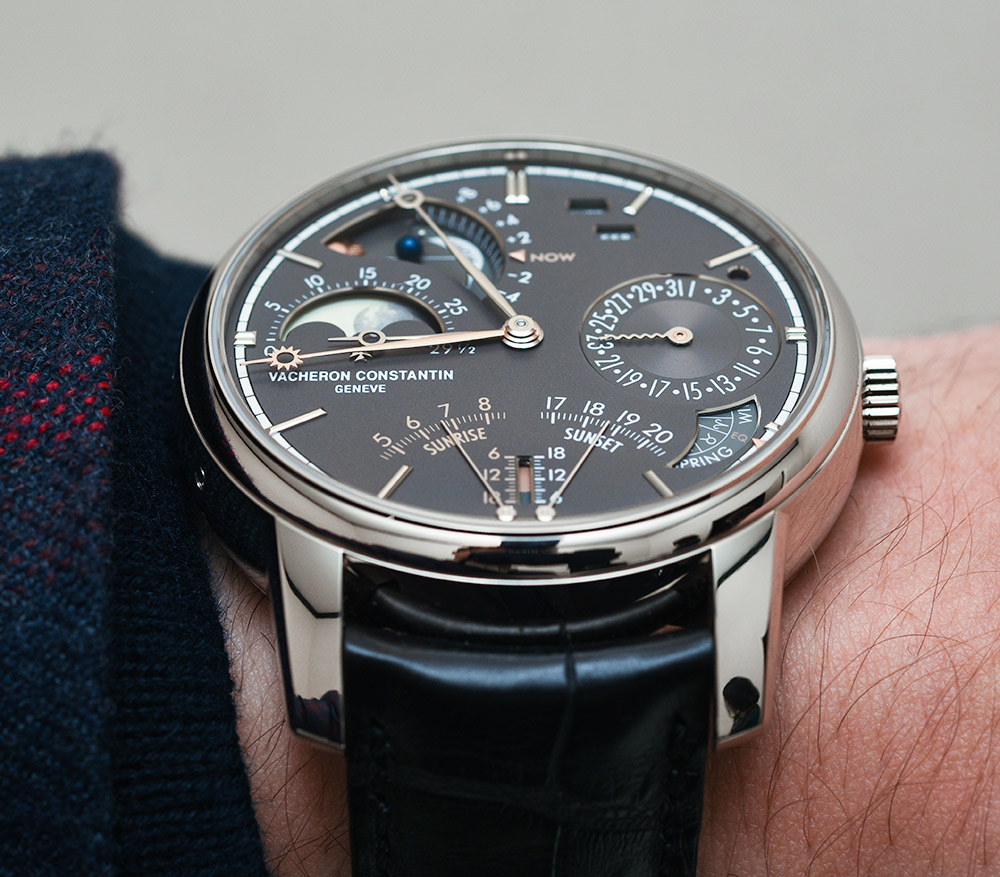
The Vacheron & Constantin- Lecoultre Watches Replica Les Cabinotiers Celestia Astronomical Grand Complication 3600 watch is a watch that cannot help but be defined by its numbers. 5 years of development, 23 complications, 6 barrels offering 3 weeks of power reserve, 514 components, a caliber that’s just 8.7mm thick, and to round it all up, it is a one-of-a-kind model. It is also the most complicated wristwatch that Vacheron Constantin has ever made. Therefore, there can be no doubts that the Vacheron Constantin Les Cabinotiers Celestia Astronomical Grand Complication 3600 is one technically impressive watch. Of course, the number you know I wouldn’t forget is the over $1,000,000 price for the piece.

All images by David Bredan

Let’s begin with the case. The Les Cabinotiers Celestia Astronomical Grand Complication is a fairly big watch, but it is actually quite modestly sized if you consider the number of complications it houses. It is 45mm wide and just 13.6mm thick, impressive for a watch with 23 complications. The case is made out of 18k white gold and is very classic in its style and execution. The gently sloping lugs aid in wearing comfort and the entire case is masterfully polished. It’s funny, but it looks like the crown is a tad small, which can make winding a little difficult, but a bigger crown would have looked out of proportion with the case. Fortunately, the Les Cabinotiers Celestia Astronomical Grand Complication watch has a power reserve of 3 weeks – yes, weeks, not days – which means you don’t have to wind it all that often.

The Vacheron Constantin Watches Wiki Replica Les Cabinotiers Celestia Astronomical Grand Complication has three separate gear trains that power the readings of civil, solar, and sidereal time. Civil time refers to the time that we all use and know. Solar time refers to the time that is dictated by the position of the sun in the sky. Sidereal time is another time-keeping system that is based on the position of fixed stars. This is a system seldom seen in watches because of its complexity. But it is also because the Les Cabinotiers Celestia Astronomical Grand Complication has three separate gear trains that it is able to do things that other watches cannot do (more on this as we go along).


The dial is slate gray and has many indicators, apertures, and hands. It might be a little daunting at first, but the various indicators and hands are actually legible and self-explanatory. In the middle, you have the standard hour and minute Breguet pomme-style hands in white gold, and a third hand in pink gold with a sun as its tip that tracks the solar time. Solar time is measured by looking at the position of the sun in the sky and it is not perfectly 24 hours a day. In fact, it is only precisely 24 hours in 4 days every year. Therefore, the hand in gold will point and indicate the amount of time solar time deviates from civil time. This is also known as the equation of time indicator.

Now, the solar time or equation of time indicator might look simple, but it is actually telling solar time in real-time. In most other watches with equation of time indicators, what is being shown is the difference in time between civil and solar time, so you will need to do some mental math to work out the exact solar time. Here, you simply read off the dial. It is what is known as a running equation of time indicator and this is possible because of the watch’s separate tropical gear train. This tropical gear train also drives all the other solar complications, which we will talk about later.

On the front dial is also the perpetual calendar display. The date is indicated using a pointer-type date display via a sub-dial at 3 o’clock. A squiggly hand makes it easy to read the date. The month and days are shown through small apertures at 1 o’clock and the leap year indicator is displayed just to the top right of the date sub-dial.



